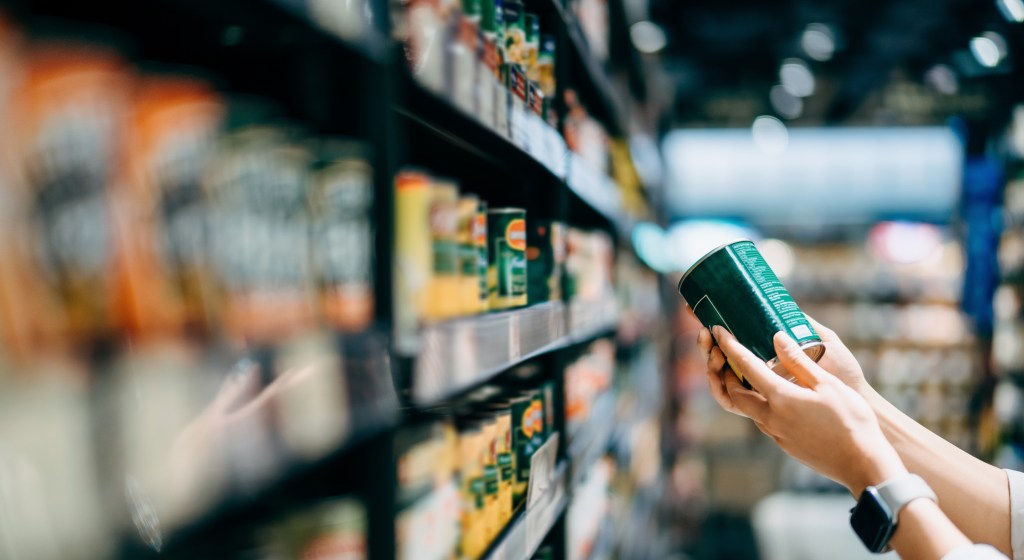Brick-and-mortar report
The evolution of physical stores
The pandemic accelerated consumer adoption of online shopping, but it wasn’t the demise of physical stores that many predicted. Although convenient shipping and delivery options kept many shoppers away from brick-and-mortar, the convenience of buying online for curbside and in-store pick-up ensured that physical stores still played a central role in grocery shopping. Case in point: at the end of Q1 2022, 86% of consumers reported buying FMCG products both in-store and online, with only 14% of consumers shopping inside brick-and mortar locations. Two years before, 81% of consumers had never even bought groceries online, for delivery or pick up.
As the role of many brick-and-mortar stores evolves into a de facto fulfillment center, CPG brands must also consider how to manage their positions on the digital shelf and the increased potential for out-of-stock products. The only way for brands to address and manage these challenges is with accurate omnichannel data. With omnichannel data, brands can track sales performance and consumer behaviors across channels, adjust to avoid out-of-stocks, and optimize their presence on e-commerce platforms.
Balancing online and offline shopping behavior
While home delivery ruled the day at the height of the pandemic, click-and-collect has become increasingly popular among consumers who are now comfortable shopping across channels to best fit their needs. NielsenIQ data found that 22% of consumers now plan an in-store shopping trip combined with an online order.
For shoppers who go into a store to pick up an order and then stay to shop for additional items:
- 60% said they browse for anything that looks interesting
- 52% said they shop for specific items that they did not order online
- 44% look for seasonal items.
When a store must function as both a fulfillment center and a welcoming environment for in-store shoppers, it requires multiple operational strategies. Omnichannel data can help brands and retailers pinpoint how consumers buy products online for pickup compared to when they are in the store, understand how different pricing or pack sizes influence purchase decisions in other channels, and maintain the right inventory levels to accommodate demand volume from multiple sales channels.
Avoid the “out-of-stock” e-commerce spiral
That last point is essential because an out-of-stock spiral in e-commerce is potentially catastrophic. Unavailable items will not appear in an online search, leading to declining sales and eventually delistment. Or, products are pulled from in-store shelves to fulfill online orders, which leads to underperforming in-store sales and, again, delistment, an outcome every CPG brand wants to avoid.
Granular omnichannel data can break down sales performance of delivered orders vs. click-and-collect orders, allowing brands to see how they are performing, how the category is shifting, and how consumers are shopping at specific retailers. With these insights, brands can better prevent products from being out of stock in stores and on retailers’ e-commerce sites.
Double duty staff, stores, and strategies
Because consumers are increasingly omnishoppers—they embrace the ease of online shopping and the in-store experience in equal measure—both CPG brands and retailers are finding it challenging to balance brick-and-mortar performance with optimizing the digital shelf. This makes it critical for brands to distinguish precisely where sales come from.
Comprehensive and accurate retail data can reveal who is buying online for in-store pickup and delivery—feeding brick-and-mortar’s new role in fulfillment—and who is buying from CPGs online directly. This insight can fuel more effective pricing, promotional, and marketing strategies tailored to each channel and the demographics that utilize them most.
De-duplicated sales data gives brands an edge
Two significant challenges to assessing the omnichannel marketplace are data accuracy and purchase attribution. Online ordering for pickup creates a murky data proposition—was the purchase made online or in the store? Often, transactions like these are double counted.
As consumers become more fluid across channels, and the marketplace more complex, using the right measures and analytics will be critical as brands execute their omnichannel strategies. This means sales and category and market share data that are comprehensive and accurate, an in-depth understanding of omnichannel consumer behavior, and digital shelf metrics to optimize e-commerce performance.
Equipped with this data, brands can better manage product availability, avoid the e-commerce out-of-stock spiral, and ensure that their brand is reaching consumers both in the store and online.
Our new report “Your order is ready in-store: Brick-and-mortar’s new fulfillment role and how to navigate it,” showcases real-world examples of how online shopping is changing brick-and-mortar operations. Download the report to learn how to navigate this evolution and optimize your digital shelf with better data.





